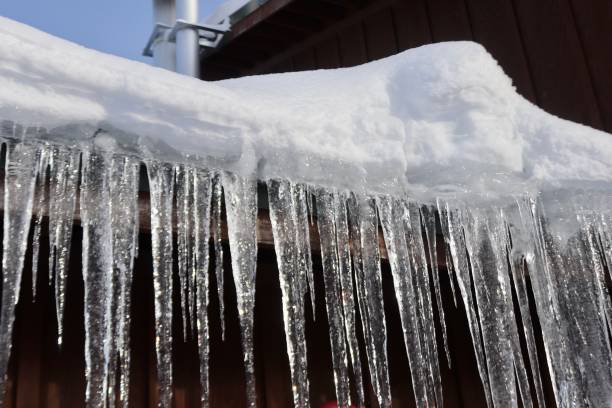How to Protect Pipes from Cold Weather Damage: Essential Tips
How to Protect Pipes from Cold Weather Damage: Essential Tips
Blog Article
Are you currently hunting for facts about 6 Ways to Prevent Frozen Pipes?

Winter can wreak havoc on your plumbing, particularly by freezing pipes. Below's just how to stop it from taking place and what to do if it does.
Introduction
As temperature levels drop, the risk of icy pipes rises, possibly causing pricey repair work and water damage. Recognizing just how to avoid frozen pipes is critical for home owners in cool environments.
Comprehending Frozen Pipelines
What causes pipes to freeze?
Pipelines ice up when exposed to temperatures listed below 32 ° F (0 ° C) for expanded durations. As water inside the pipes freezes, it increases, putting pressure on the pipe wall surfaces and possibly creating them to rupture.
Dangers and damages
Frozen pipelines can lead to water system disturbances, property damage, and costly repair work. Burst pipelines can flood homes and cause extensive architectural damages.
Signs of Frozen Pipeline
Determining icy pipes early can avoid them from rupturing.
Exactly how to recognize frozen pipes
Look for decreased water flow from faucets, uncommon smells or noises from pipelines, and visible frost on subjected pipes.
Avoidance Tips
Shielding prone pipelines
Cover pipelines in insulation sleeves or make use of heat tape to shield them from freezing temperature levels. Concentrate on pipes in unheated or exterior locations of the home.
Home heating strategies
Keep interior spaces appropriately warmed, particularly locations with plumbing. Open up closet doors to enable cozy air to distribute around pipelines under sinks.
Protecting Outdoor Pipes
Yard hose pipes and outside faucets
Detach and drain pipes garden pipes before winter months. Mount frost-proof spigots or cover exterior faucets with insulated caps.
What to Do If Your Pipes Freeze
Immediate actions to take
If you presume frozen pipes, maintain faucets available to eliminate stress as the ice thaws. Utilize a hairdryer or towels soaked in warm water to thaw pipes gradually.
Long-Term Solutions
Architectural modifications
Consider rerouting pipes away from outside wall surfaces or unheated areas. Include additional insulation to attic rooms, basements, and crawl spaces.
Updating insulation
Invest in top quality insulation for pipelines, attics, and wall surfaces. Correct insulation aids preserve consistent temperatures and lowers the risk of frozen pipes.
Final thought
Avoiding icy pipelines needs aggressive actions and fast feedbacks. By recognizing the reasons, signs, and safety nets, property owners can shield their pipes throughout cold weather.
5 Ways to Prevent Frozen Pipes
Drain Outdoor Faucets and Disconnect Hoses
First, close the shut-off valve that controls the flow of water in the pipe to your outdoor faucet. Then, head outside to disconnect and drain your hose and open the outdoor faucet to allow the water to completely drain out of the line. Turn off the faucet when done. Finally, head back to the shut-off valve and drain the remaining water inside the pipe into a bucket or container. Additionally, if you have a home irrigation system, you should consider hiring an expert to clear the system of water each year.
Insulate Pipes
One of the best and most cost-effective methods for preventing frozen water pipes is to wrap your pipes with insulation. This is especially important for areas in your home that aren’t exposed to heat, such as an attic. We suggest using foam sleeves, which can typically be found at your local hardware store.
Keep Heat Running at 65
Your pipes are located inside your walls, and the temperature there is much colder than the rest of the house. To prevent your pipes from freezing, The Insurance Information Institute suggests that you keep your home heated to at least 65 degrees, even when traveling. You may want to invest in smart devices that can keep an eye on the temperature in your home while you’re away.
Leave Water Dripping
Moving water — even a small trickle — can prevent ice from forming inside your pipes. When freezing temps are imminent, start a drip of water from all faucets that serve exposed pipes. Leaving a few faucets running will also help relieve pressure inside the pipes and help prevent a rupture if the water inside freezes.
Open Cupboard Doors
Warm your kitchen and bathroom pipes by opening cupboards and vanities. You should also leave your interior doors ajar to help warm air circulate evenly throughout your home.
:strip_icc()/snow-outdoor-faucet-pipes-4af65d1e5e904fb1aa7bf74071fe5d89.jpg)
I hope you enjoyed our part about How to Prevent Your Pipes From Freezing. Many thanks for taking time to browse our article post. Are you aware of someone else who is serious about the niche? Why not promote it. Bless you for being here. Revisit us soon.
Click Here Report this page